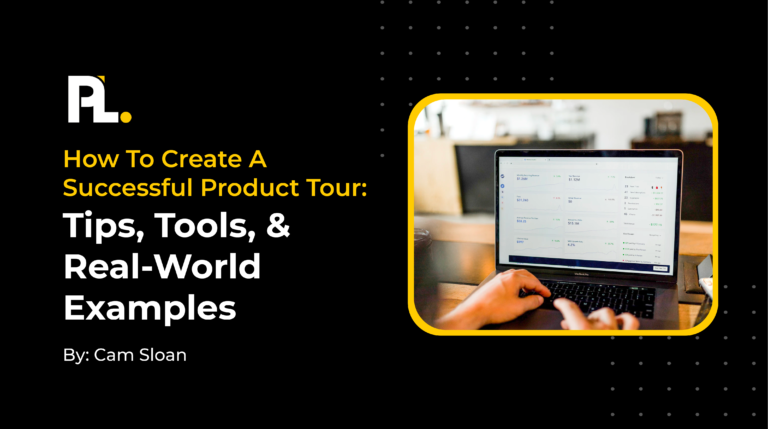Not all growth loops wield the same power.
Growth loops are compounding systems where inputs (e.g. budget, users, etc.) are invested to generate outputs (e.g. more users, revenue, etc.) which can be reinvested again in more input.
Here’s an example of LinkedIn growth loops:
- Input. A new user signs up on LinkedIn.
- Action(s). LinkedIn prompts them to upload their contacts to see who else is on LinkedIn.
- Output. New connections are made, driving more content and conversations.
This model became popular because it helps product and marketing teams think about product and growth through the lenses of a cross-functional compounding mechanism, as opposed to a siloed, linear process. This mindset is increasingly in demand in product-led growth (PLG), where product, marketing, and user experience must be masterfully aligned to drive growth.
Setting up a growth loop can be a feat in itself. Still, making it spin faster — meaning more users are able to complete the action step of the loop in less time — cycle can be even harder, especially when you’re a scrappy PLG startup with limited resources.
However, incentives are great for focusing the user’s attention on completing the action step of the loop, increasing its cycle time and efficiency. In this post, we’ll show you exactly how you can use incentives to accelerate PLG growth loops steadily and effectively. Let’s dive in.
Understanding Incentives in Growth Loops
At a fundamental level, an incentive promises a future reward in exchange for a specific action. In software products, there are three main types of incentives.
- Extrinsic Incentives. These are tangible rewards like Wise’s “Give $ and Get $”, Dropbox’s in-product discounts, or earning points, which can be redeemed outside or inside the product experience.
- Intrinsic Incentives. Think of rewards that are driven by inner motivation, like learning a new skill or achieving one’s goals, desires, and purposes. For example, platforms like Ledgy plant a tree for every referred customer you send their way.
- Social incentives. Incentives that come from social interaction with colleagues, friends, family, or the broader public — think LinkedIn’s top voice badge that gives you recognition when you post useful content that gets high engagement.
Now that we’ve covered the role of incentive, we’ll analyze real-life case studies of PLG growth loops.
1. Incentivized Viral Loop Example: Moss
A viral loop attracts users through natural, non-incentivized product usage. Notable PLG examples of viral loops include Dropbox, Slack, and Moss.
Let’s unpack the latter:
- Input. A new user signs up to Moss.
- Action(s). They tell friends over dinner about this new tool they use at work.
- Output. A portion of them will check their site and create a new account to try it at work.
This is the gold standard of virality.
When users can't stop talking about a product with their friends, family, and colleagues, that’s when you've struck virality.
However, let’s see how incentives can further amplify and scale existing virality.
How to layer incentives to Viral Loops
Moss recently implemented a full-scale referral program, using extrinsic incentives to increase users’ motivation to share links and spread the word.
This is what their incentivized viral loop looks like:
- Input. A new user signs up to Moss and upgrades as a paying customer.
- Action. They notice Moss has a referral program and share their link with peers.
- Action. The referred user receives the referral link with the introductory discount.
- Output. Enticed by the reward, a portion of them will create a new account.
Moss’ two-sided incentives are what makes them effective. When both the referrer and the referee receive a reward, it’s easier for the growth loop to close and spin faster. To achieve this, Moss provides pre-written email templates to their users, making sharing effortless. Also, the notification banner shown upon log-in drives participation and sharing rates. The banner’s messaging emphasizes the incentive to earn 500€ by referring others.
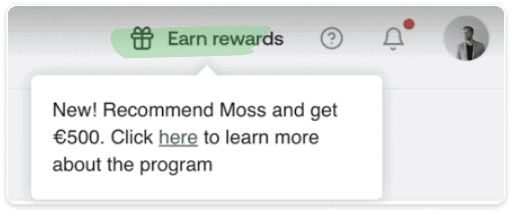
All in all, Moss’ execution shows how two-sided, meaningful, and personal incentives can drive real habit formation and scale viral loops.
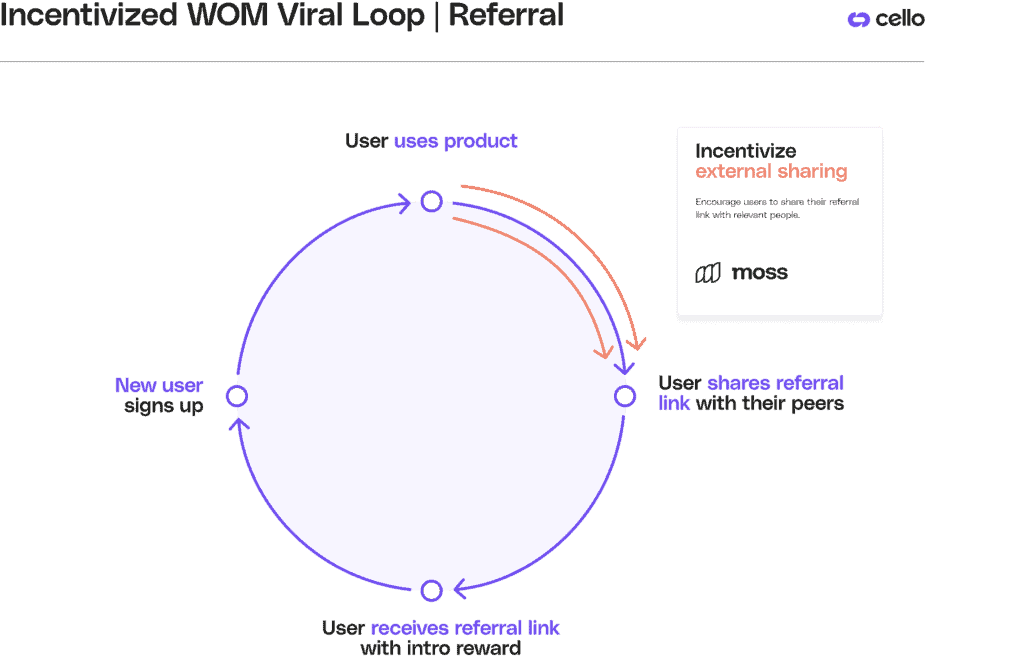
2. User-Generated Content (UGC) Loops Example: X.com
User-generated content loops drive growth by creating content through product usage. Content is then distributed by the user (e.g. through social platforms) or the company (e.g. by SEO), ultimately driving more users. Great B2B examples of UGC loops include social platforms like G2.com and Glassdoor reviews.
Let’s consider a major UGC loop like X.
- Input. A new user signs up to X.
- Action(s). They read tweets and share them with friends via email or other apps.
- Output. New users see the tweets and create a new account on X.
Oftentimes, platforms like X have a very skewed distribution of content creators vs. consumers. US data shows only 10% of users are accountable for a staggering 92% of all the tweets created in the country.
So how do you encourage the remaining 90% to create content?
With the power of incentives.
How to layer incentives for UGC Loops
Elon and the X team created the incentive to share a percentage of ad revenue (again, a financial incentive). Creators will earn up to 97% of the revenue earned from ads placed within the content itself.
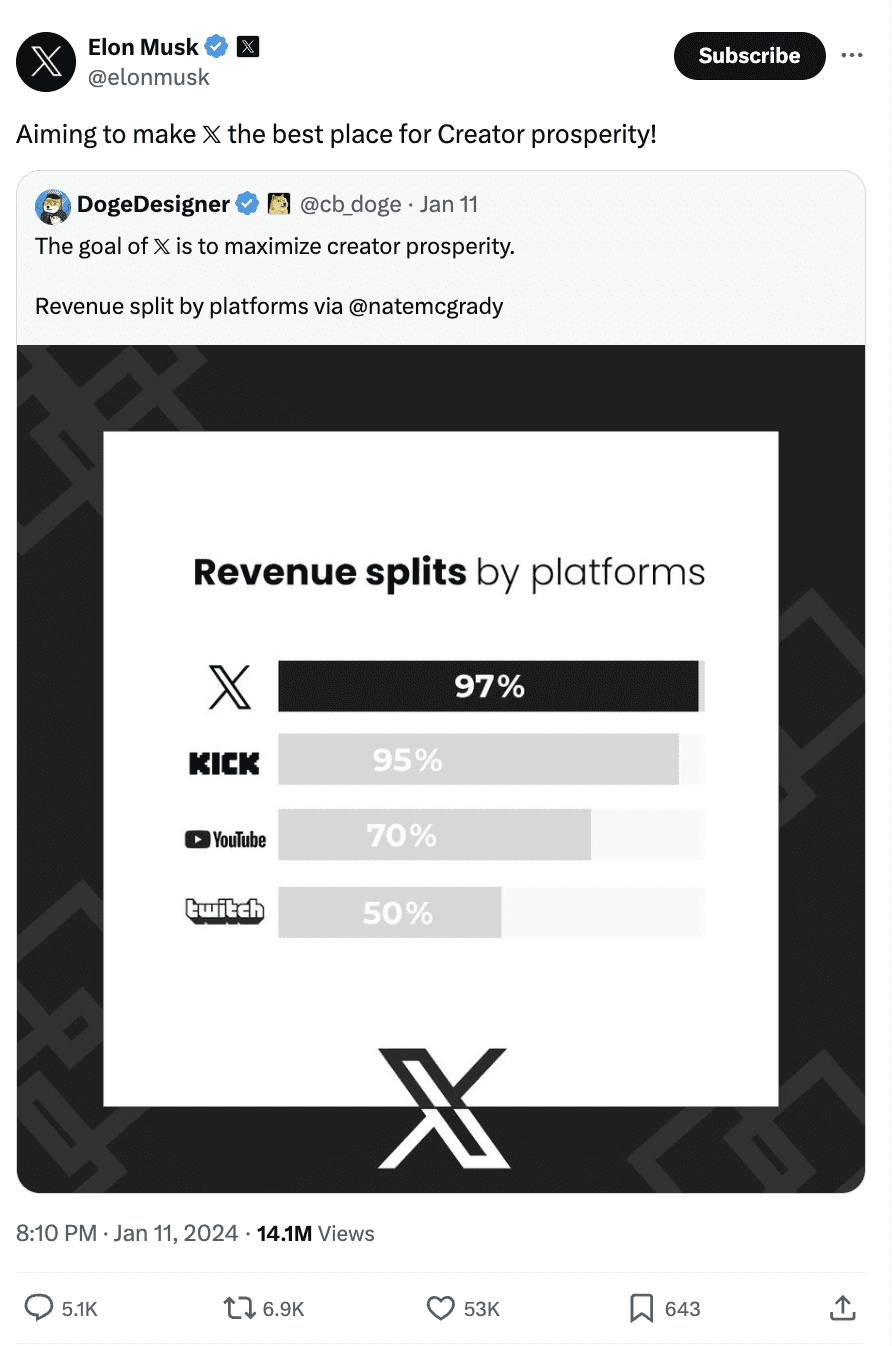
Here’s what the loop looks like with incentives.
- Input. A new user signs up to X.
- Action. Enticed by the ad revenue share program, they create content that optimizes for comments and conversations.
- Action. X places ads between comments and share a percentage of revenue with the creator.
- Output. New users engage with the tweet to amplify the conversation, effectively creating more content.
- Output. Enticed by their earnings, creators create more tweets that optimize for comments.
Creators often mention even when earning just a few hundred dollars:
$8 to make $370 is a fantastic ROI for something I do anyway.
An astounding example of how incentives can make sharing a no-brainer, closing the UGC growth loop effectively.
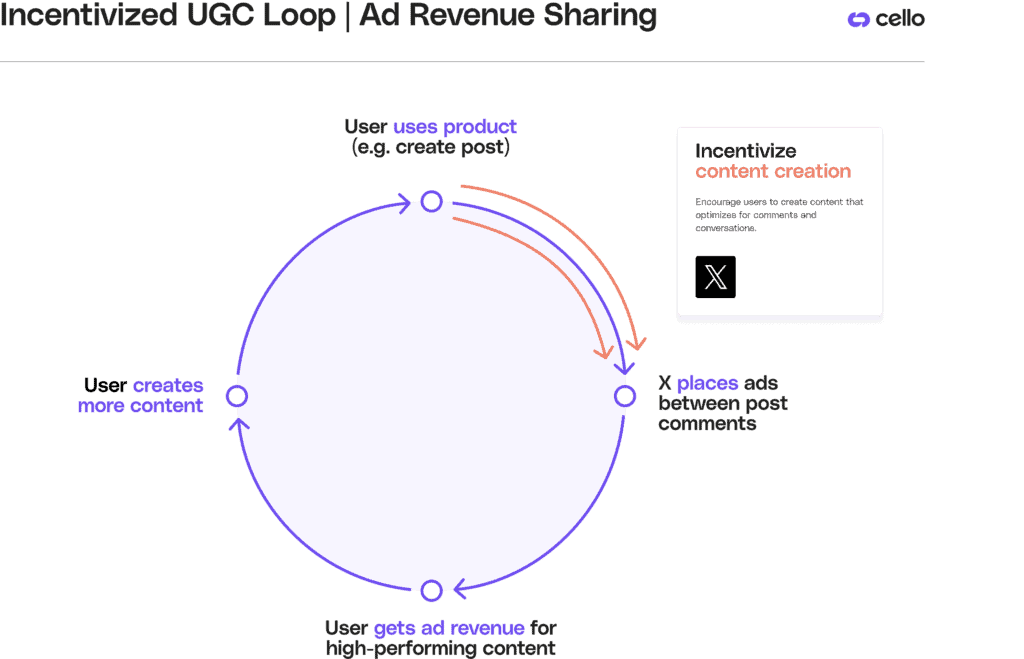
3. Casual Contact Viral Loops Example: Superhuman and TLDV
Casual contact viral loops happen when one user indirectly attracts others through natural product usage.
How many times have you seen a “powered by” label while browsing the web, like Intercom, SurveyMonkey, or Mailchimp; or even offline, when seeing Deliveroo drivers and Lime scooters around your area? That’s a casual contact viral loop.
Let’s examine Superhuman’s casual contact viral loop.
- Input. A new user signs up to Superhuman.
- Action(s). They send an email with Superhuman
- Output. New users see the “sent with Superhuman” when they receive emails and sign up.
Traditionally, most users have the option to remove the “powered by” label when upgrading to a paid plan.
How to layer incentives for UGC Loops
However, you could be using incentives to reward your customers for keeping your product's branding. This way, you not only gain more visibility but also foster brand loyalty as you reward your users for being proud brand ambassadors.
Let’s revisit the Superhuman’s casual contact viral loop with incentives.
- Input. A new user signs up to Superhuman.
- Action. They notice Superhuman offers a reward to keep “sent with Superhuman” label on their email footer and decide to keep it on.
- Action. They send an email with Superhuman.
- Output. New users see the “sent with Superhuman” when receiving emails, and sign up.
In this context, incentives work as a way to keep the loop active and scaling, as opposed to giving customers the option of hampering it. They offered a two-sided incentive (for both the referrer and referred user) of one month free (extrinsic incentive) for every paid user coming from the referral link on their email footer.
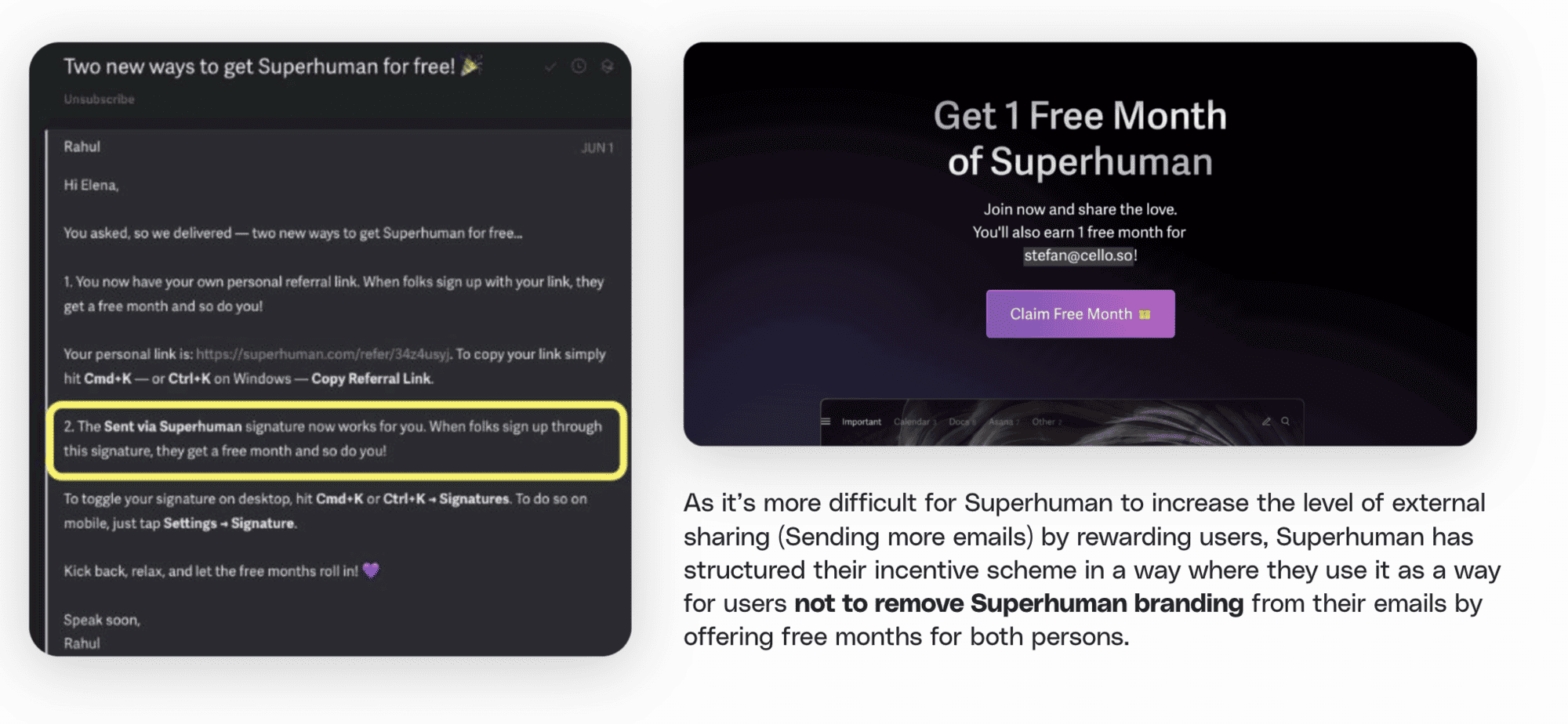
According to Superhuman, the “sent with Superhuman” label drives between 30-60% of their overall top-of-funnel and up to 20% of their signups.
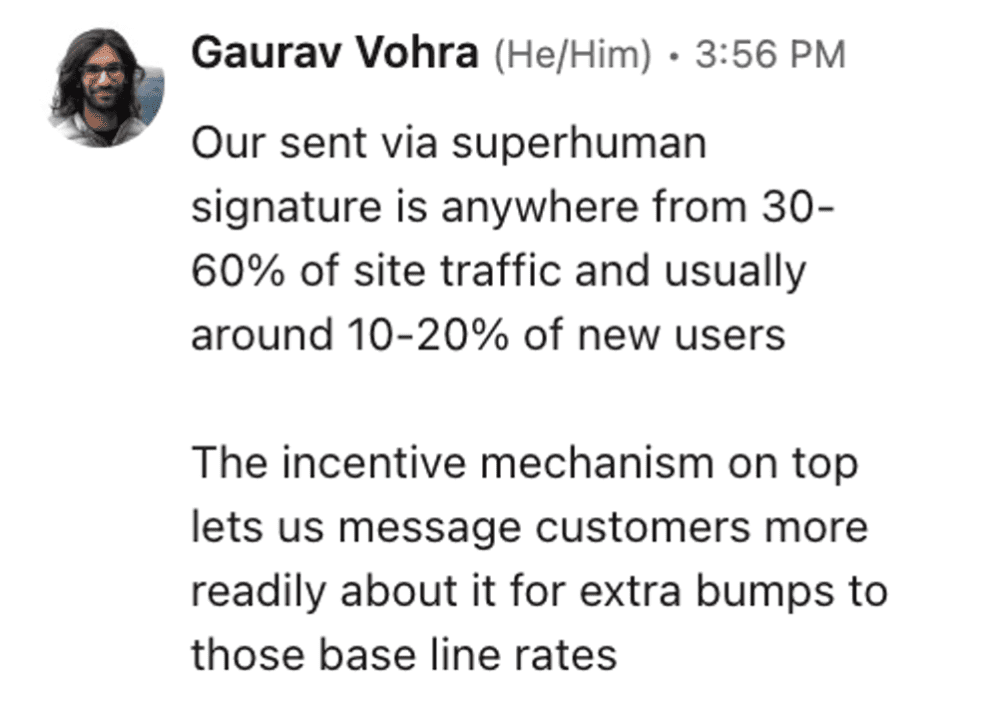
tl;dv is another similar example of incentivized casual contact viral loops. As an AI-powered meeting recorder, their product offers multiple user interactions by sending every meeting participant summarized meeting notes via mail –each a “casual touchpoint” that can lead to more people knowing about them and signing up.
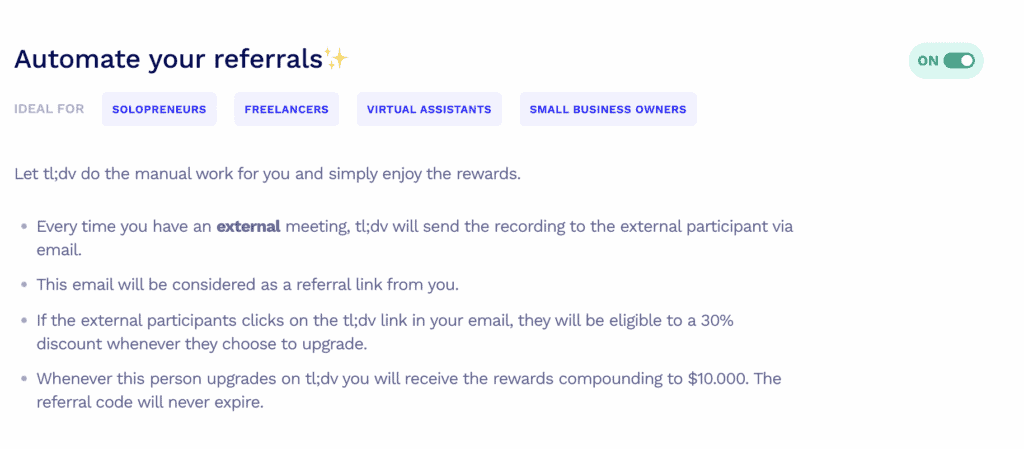
This seamlessly integrated touchpoint of virality can make sharing frictionless, especially with incentives in place. For example, they allow users to automate their referrals and compound rewards by including a referral link on the email of every external participant.

It’s easy to see how the right incentives, placed strategically across the UX/UI, can make such a big impact in spinning your growth loops faster. And without crazy investments in engineering resources.
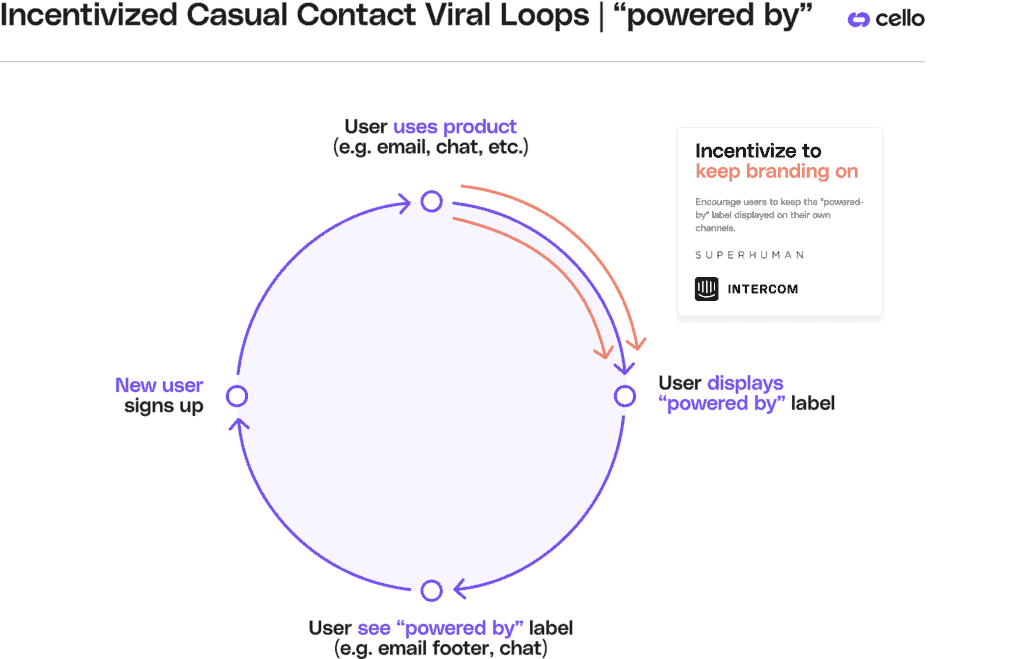
Closing Thoughts
Global PLG leaders like Moss, Superhuman, X, and tl;dv all use incentives to accelerate their growth loops. When integrated seamlessly into the product UX/UI and aligned with the core value prop, incentivizes can accelerate and scale existing WOM viral loops.
To work, incentives need to be something your customers want. You can test extrinsic, intrinsic, or social incentives — or a mix of them all — for your growth loop strategy.
With the right tools, you can shorten the gap between strategy and execution of these incentives, allowing you to seamlessly apply and test multiple incentives to all your growth loops.




